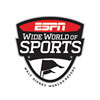TRAINING SERIES
2011-11-01Written by: Tags: Feature Weight control for athletes in Sports that use weight divisions can be tedious for both coach and player, but most trouble can be all avoided by research, planning and will power. There is much information available on the subject and many people will, “say the right things”, but with ...
 Written by:
Written by: Tags: Feature

all avoided by research, planning and will power. There is much information available on the subject and many people will, “say the right things”, but with little results. The equation is simple; calories consumed per day must be less than calories burned per day.
First, the athlete must make sure they have no medical problem or allergies that might hinder weight loss. A visit to your doctor
for blood test and consultation will give you the confidence that the task is attainable.
On your computer you can search calories per day and you will find sites with a calculator, in which you can type, your height, gender, weight, age, and activity level to give you your basic metabolic rate. For example, a male 5’ 10”, 164 lbs, 22 years old that is extremely active will require 3,122 calories per day to maintain his weight. The website states to lose weight, try taking 500 calories less per day then this number.
Once you find out calories per day, now search “calories in food”. These websites will give you an idea of how many calories are in foods that you will make your diet with.
Some examples are:
219 Calories – 3 oz. Top Sirloin Steak
55 Calories – 1 Medium Apple
164 Calories – 1 Medium Potato
74 Calories – 1 Large Egg
50 Calories – 1 Slice of Wheat Bread
For you fast food type, from the McDonalds website:
540 Calories – Big Mac
500 Calories – Large Fries
310 Calories – Large Coke
880 Calories – Large Chocolate Shake
So you can see that fast food will ‘eat up’ your calories quick.
Once you have found foods that you like, that are good healthy choices of meats, vegetables, fruit and nuts; place them together until you get your desired calories per day. Then divide them into 6 small Tupperware type containers meals to be eaten every two hours. Remember to drink plenty of fresh water throughout the day to stay hydrated. Picture an old railroad engine with the engineer shoveling coal in it to the fire every so often to keep it running. This is what you want to do to your metabolism. Long periods of not eating will slow your metabolism and starve your body, so when you do eat, your body stores it as fat for
upcoming long periods of no food.
To figure out how many calories you burn during exercise, I believe you really need to monitor your heart, to get the formula for figuring your heart rate during exercise. You can go to www.livestrong.com. Or you can search “calories burned during exercise” and check other websites. A 155 lb person who runs 9 minute miles for 1 hour, will burn 774 calories. Practices during a 1 hour Taekwondo class at night will burn 704 calories. Now these are guidelines probably for non athletes, but it shows you that even if you work out twice a day and burn 1478 calories, but you eat a big fast food meal of 2230 calories, you are taking in more than you burn. Therefore you cannot eat whatever you want. But, with some planning and research you can lose weight.
Now there are many variables, but your goal is to get a handle on your food choices, portions, and intake. This is most of the battle because the athletes I have encountered train very hard and will have no problem burning necessary calories. Next is to start losing, so you plan on losing 1 pound per week (12 lbs. = 12 weeks) or 3 months. If not satisfied, then cut calories slightly and up your workout intensity.
With a little effort, planning, and tweaking, each athlete can make losing weight a problem of the past. Remember to consult a physician for any questions on personal issues, and happy weight cutting.
 Email
Email Print
Print









